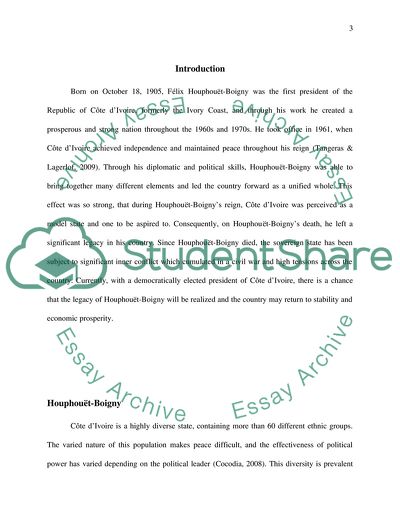Cite this document
(The Legacy of Flix Houphouet-Boigny Cte dIvoire Essay Example | Topics and Well Written Essays - 2000 words, n.d.)
The Legacy of Flix Houphouet-Boigny Cte dIvoire Essay Example | Topics and Well Written Essays - 2000 words. https://studentshare.org/history/1772783-the-legacy-of-felix-boigny-cote-divoire
The Legacy of Flix Houphouet-Boigny Cte dIvoire Essay Example | Topics and Well Written Essays - 2000 words. https://studentshare.org/history/1772783-the-legacy-of-felix-boigny-cote-divoire
(The Legacy of Flix Houphouet-Boigny Cte DIvoire Essay Example | Topics and Well Written Essays - 2000 Words)
The Legacy of Flix Houphouet-Boigny Cte DIvoire Essay Example | Topics and Well Written Essays - 2000 Words. https://studentshare.org/history/1772783-the-legacy-of-felix-boigny-cote-divoire.
The Legacy of Flix Houphouet-Boigny Cte DIvoire Essay Example | Topics and Well Written Essays - 2000 Words. https://studentshare.org/history/1772783-the-legacy-of-felix-boigny-cote-divoire.
“The Legacy of Flix Houphouet-Boigny Cte DIvoire Essay Example | Topics and Well Written Essays - 2000 Words”. https://studentshare.org/history/1772783-the-legacy-of-felix-boigny-cote-divoire.


